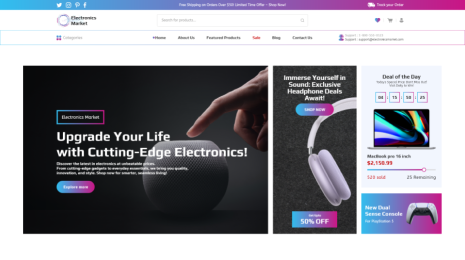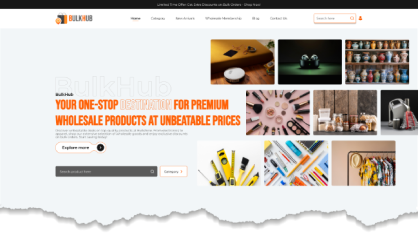
Introduction:
The user experience of a WordPress website needs to be improved in the fast-paced digital world of 2024. animated progress bars are a great way to grab readers' attention and make your content easier to navigate. Imagine your viewers effortlessly navigating through a graphic representation of completion, keeping their interest and comprehension piqued as they browse your website.
We'll look at the various benefits to add WordPress animated progress bars to your website in 2024 in this piece, along with the newest trends and simple installation techniques. You can maintain your competitive edge and enhance the functionality of your website with this innovative update.
What Are Animated Progress Bars?
An animated progress bars is an instance of an instructional tool that is used to demonstrate how an assignment or procedure is progressing. To give consumers an idea of how much work remains, it typically takes the form of a horizontal line that grows larger as the project approaches completion. Websites, software programs, and other technological interfaces frequently employ progress bars to show users how a process is going.
An efficient way to visually convey data, skills, or the progress of content loading is through animated progress bars. Integrating these components with WordPress can improve user interaction and offer a dynamic method of information display. This tutorial will walk you through the process of making animated progress bars with JavaScript for movement and CSS for design, providing an illustrated procedure for adding them to your site using WordPress.
How to Add WordPress Animated Progress Bars?
1. Create a Progress Bar Plan
Choose your progress bar's icon and placement on your website before you start developing. Progress bars can be utilised to upload material, display skill levels, or even show finished project rates. You may decide on the size, colour, and animation speed by planning ahead.
2. Add HTML Structure
Let's add WordPress animated progress bars to your site. If you want the progress bar to appear in an article, page, and widget area, insert the HTML markup for it there. If you're utilising the Gutenberg editor, anyone can accomplish this by creating a Custom HTML block or by making changes to the HTML of your WordPress content.
Example HTML:
<div class="progress-container"><div class="progress-bar" id="myProgressBar"></div>
</div>
3. Use CSS to Style:
Next, style how you're doing bar with CSS. For a fast test, you can add this CSS to the Other CSS area of the WordPress Customiser or to the style.css file in the theme's directory.
Example CSS
.progress-container {width: 100%;
background-color: #e0e0e0;
padding: 3px;
border-radius: 5px;
box-shadow: 0 2px 5px rgba(0,0,0,0.2);
}
.progress-bar {
height: 20px;
background-color: #76b852;
width: 0%;
border-radius: 3px;
transition: width 2s;
}
The outer box and the progress indicator are defined by this CSS, which also sets the progress bar's initial width to 0% to get it ready for animation.
4. Use JavaScript to Animate:
JavaScript can be utilised to dynamically alter the add WordPress animated progress bars width over time in order to animate it. In the footer.php file of your theme, place the following HTML script before the last tag. Alternatively, enqueue it as an independent JS file for improved structure and caching.
Example JavaScript
document.addEventListener('DOMContentLoaded', function() {var elem = document.getElementById("myProgressBar");
var width = 1;
var id = setInterval(frame, 20);
function frame() {
if (width >= 100) {
clearInterval(id);
} else {
width++;
elem.style.width = width + '%';
}
}
}
The progress bar is gradually increased from 0% to 100% using this script, which imitates an animation by first waiting for the DOM to fully load.The animation's pace and quality can be altered by varying the amount of increments and the setInterval time.
5. Personalisation and Utilisation:
Several progress bars can be made simply copying the HTML structure and giving each one a different ID. Modify the CSS and JavaScript to suitably customise the look and animation of each bar. Think of incorporating interactive components, such triggering the animation if the user scroll across the progress bar and adjusting the final width dynamically in response to data properties and other sources.
Conclusion:
In 2024, when you add WordPress animated progress bars onto a website could potentially improve user experiences. These bars, which usually take the shape of a straight path that gets bigger as the project gets closer to completion, are educational tools that show how a task or process is going. They are frequently used to display customers how a process is progressing in websites, software, and other technology interfaces.
Elevate your WordPress website with captivating animated progress bars. They not only enhance user engagement but also provide a dynamic way to present information. With VW Themes’ WP theme bundle, you can effortlessly add stunning progress bars to your site. These pre-designed themes offer a wide range of customization options, including animation speed, color, and size. Plus, enjoy other impressive features like parallax effects for an immersive user experience.
For the progress bar to show up in a widget area, article, and page, add HTML structure. You can modify the HTML of your WordPress article or build a Custom HTML block while using the Gutenberg editor. For instance, the progress bar can be styled using CSS, with its initial width set to 0% to prepare it for animation.
The progress bar can be animated by dynamically changing its width over time with JavaScript. For better organisation and caching, include the following HTML script after the last tag in the footer.php file of your theme, and enqueue it as a separate JS file. The script waits for the DOM to fully load before progressively expanding the progress bar from 0% to 100% in order to imitate an animation. By changing the setInterval time and the number of steps, the animation's speed and quality can be changed.
You can add WordPress animated progress bars by replicating the HTML code and assigning a unique ID to each one. The appearance and animation of each bar can be appropriately customised by altering the CSS and JavaScript. Interactive elements can be added, such as the ability to activate the animation when the user scrolls over the progress bar and to dynamically change the final width in accordance with information properties and other sources of information.
FAQ:
1. What Does WordPress Progress Bar Mean?
A WordPress plugin that displays skills as a percentage on any page or post is a progress bar. A progress bar helps website owners showcase their abilities. The Progress bar plugin creates a progress meter and stylish progress bars by generating a shortcode.
2. What Many Different Kinds of Status Bars Exist?
A status bar can have two distinct kinds of elements: separators and indicators. Small components known as indicators typically show a word and a brief phrase. Common signs are those for Insert, Num Lock, and Cap Lock.
3. Do I need coding knowledge to add animated progress bars to my WordPress website?
Not necessarily. There are several user-friendly methods, including using pre-built themes with built-in progress bar features or employing plugins that handle the technical aspects.
4. Which WordPress themes offer pre-built animated progress bars?
Several themes, particularly those focused on design and functionality, include animated progress bar options. Our premium WordPress themes are a popular choice known for its stylish and feature-rich themes.
5. Where should I add WordPress animated progress bars on my website for maximum impact?
Progress bars can be effectively used in various sections, such as about pages, service pages, or portfolio showcases. Consider where they can best complement your content and enhance user experience.
7. How can I ensure that my progress bars are visually appealing and consistent with my website's design?
Choose colors and styles that match your website's color scheme and overall aesthetic. Maintain consistency in the design of your progress bars throughout your website.








